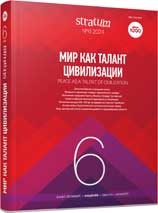Русская керамика Тарского Прииртышья XVII—XVIII вв.: от типологии к хронологии
Russian Ceramics of the Tara Irtysh Region in the 17th—18th Centuries: from Typology to Chronology
Author(s): Larisa V. Tataurova, Kristina O. SopovaSubject(s): History, Archaeology, 17th Century, 18th Century
Published by: Издательский дом Stratum, Университет «Высшая антропологическая школа»
Keywords: Siberia; Tara Irtysh region; Modern ages; Russians; ceramics; morphology
Summary/Abstract: The Russians brought their traditional life support system to Siberia, which laid the foundation for the culture of Russian Siberians. Settlers arrived from various regions of Moscow Russia, carrying with them their customary sets of dishes. In Siberia, these dishes served as models for the creation of traditional types that quickly integrated into the local indigenous culture. The establishment of Tara and its surrounding villages in 1594 led to the development of pottery production in the area. By studying ancient Russian ceramics and the history of the Tsardom of Moscow, researchers have identified various types, names, purposes, and applications of these ceramics. The analysis of anthropological and archaeological materials from Tara, as well as Russian villages in the Tara-Irtysh region during the 17th and 18th centuries, along with written accounts, has provided insights into the entry points of the settlers and the types of dishes they brought to Siberia. For the first time, chronological groups of urban ceramics have been identified based on their morphological features and the technology used in pottery production from reliably dated complexes in Tara. Additionally, collections of rural sites have been dated using these findings. The selected groups show parallels with contemporary materials from both the European part of Russia and Siberia.
Journal: Stratum plus. Археология и культурная антропология
- Issue Year: 2024
- Issue No: 6
- Page Range: 197-210
- Page Count: 14
- Language: Russian
- Content File-PDF

